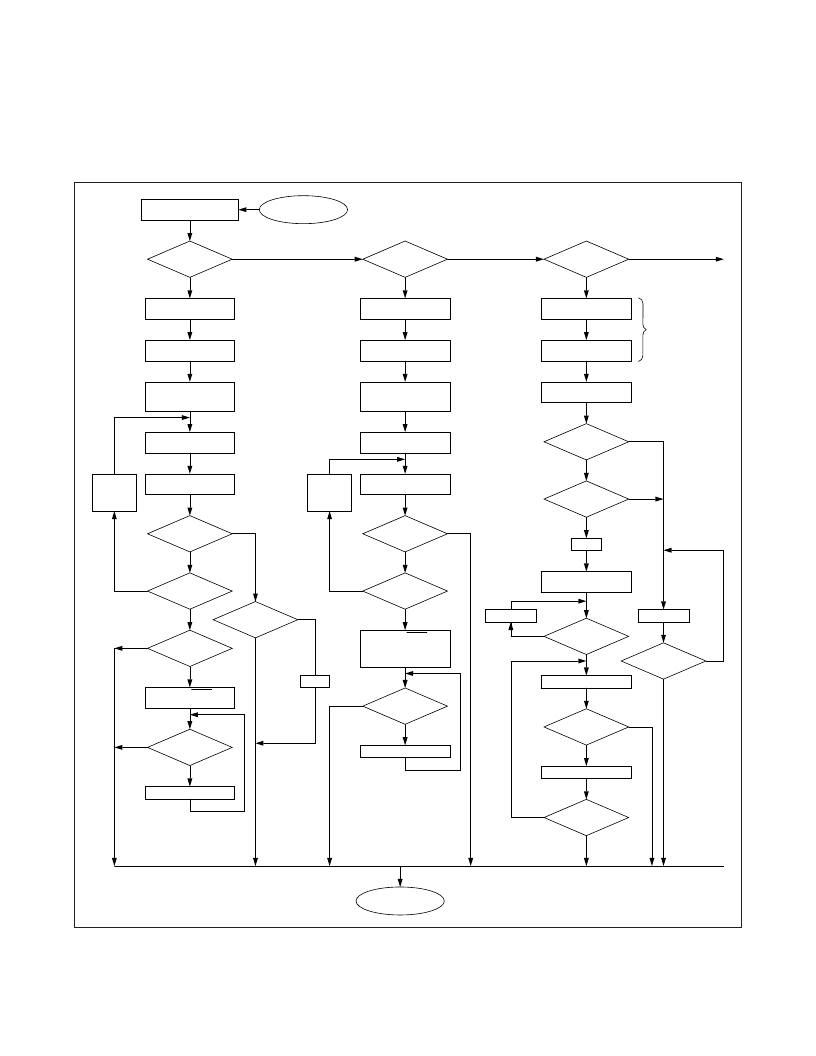- 您现在的位置:买卖IC网 > Sheet目录221 > DS1922E-F5# (Maxim Integrated)IBUTTON TEMP LOGGER 4KBit F5
�� �
�
 �
�DS1922E�
�iButton� High-Temperature� Logger� with�
�8KB� Data-Log� Memory�
�efficiency,� the� target� address� for� writing� should� point� to�
�the� beginning� of� a� page,� i.e.,� the� byte� offset� is� 0.� Thus,�
�the� full� 32-byte� capacity� of� the� scratchpad� is� available,�
�resulting� also� in� the� ending� offset� of� 1Fh.� The� ending�
�offset� together� with� the� PF� flag� are� a� means� to� support�
�the� master� checking� the� data� integrity� after� a� Write�
�command.� The� highest� valued� bit� of� the� E/S� register,�
�called� authorization� accepted� (AA),� indicates� that� a�
�valid� Copy� command� for� the� scratchpad� has� been�
�received� and� executed.� Writing� data� to� the� scratchpad�
�clears� this� flag.�
�Writing� with� Verification�
�To� write� data� to� the� DS1922E,� the� scratchpad� must� be�
�used� as� intermediate� storage.� First,� the� master� issues�
�the� Write� Scratchpad� command� to� specify� the� desired�
�target� address,� followed� by� the� data� to� be� written� to� the�
�scratchpad.� In� the� next� step,� the� master� sends� the�
�Read� Scratchpad� command� to� read� the� scratchpad�
�and� to� verify� data� integrity.� As� preamble� to� the� scratch-�
�pad� data,� the� DS1922E� sends� the� requested� target�
�address� TA1� and� TA2� and� the� contents� of� the� E/S�
�Register.� If� the� PF� flag� is� set,� data� did� not� arrive� cor-�
�rectly� in� the� scratchpad.� The� master� does� not� need� to�
�continue� reading;� it� can� start� a� new� trial� to� write� data� to�
�the� scratchpad.� Similarly,� a� set� AA� flag� indicates� that�
�the� Write� command� was� not� recognized� by� the� device.�
�If� everything� went� correctly,� both� flags� are� cleared� and�
�the� ending� offset� indicates� the� address� of� the� last� byte�
�written� to� the� scratchpad.� Now� the� master� can� continue�
�verifying� every� data� bit.� After� the� master� has� verified�
�the� data,� it� must� send� the� Copy� Scratchpad� command.�
�This� command� must� be� followed� exactly� by� the� data� of�
�the� three� address� registers� TA1,� TA2,� and� E/S,� as� the�
�master� has� read� them� verifying� the� scratchpad.� As�
�soon� as� the� DS1922E� has� received� these� bytes,� it�
�copies� the� data� to� the� requested� location� beginning� at�
�the� target� address.�
�22�
�Memory� and� Control�
�Function� Commands�
�Figure� 9� shows� the� protocols� necessary� for� accessing�
�the� memory� and� the� special� function� registers� of� the�
�DS1922E.� An� example� on� how� to� use� these� and� other�
�functions� to� set� up� the� DS1922E� for� a� mission� is� includ-�
�ed� in� the� Mission� Example:� Prepare� and� Start� a� New�
�Mission� section.� The� communication� between� the� mas-�
�ter� and� the� DS1922E� takes� place� either� at� standard�
�speed� (default,� OD� =� 0)� or� at� overdrive� speed� (OD� =�
�1).� If� not� explicitly� set� into� the� Overdrive� Mode� the�
�DS1922E� assumes� standard� speed.� Internal� memory�
�access� during� a� mission� has� priority� over� external�
�access� through� the� 1-Wire� interface.� This� affects� sever-�
�al� commands� in� this� section.� See� the� Memory� Access�
�Conflicts� section� for� details� and� solutions.�
�Write� Scratchpad� Command� [0Fh]�
�After� issuing� the� Write� Scratchpad� command,� the� mas-�
�ter� must� first� provide� the� 2-byte� target� address,� fol-�
�lowed� by� the� data� to� be� written� to� the� scratchpad.� The�
�data� is� written� to� the� scratchpad� starting� at� the� byte� off-�
�set� T[4:0].� The� master� must� send� as� many� bytes� as� are�
�needed� to� reach� the� ending� offset� of� 1Fh.� If� a� data� byte�
�is� incomplete,� its� content� is� ignored� and� the� partial� byte�
�flag� PF� is� set.�
�When� executing� the� Write� Scratchpad� command,� the�
�CRC� generator� inside� the� DS1922E� calculates� a� CRC�
�of� the� entire� data� stream,� starting� at� the� command� code�
�and� ending� at� the� last� data� byte� sent� by� the� master�
�(Figure� 15).� This� CRC� is� generated� using� the� CRC-16�
�polynomial� by� first� clearing� the� CRC� generator� and� then�
�shifting� in� the� command� code� (0Fh)� of� the� Write�
�Scratchpad� command,� the� target� addresses� TA1� and�
�TA2� as� supplied� by� the� master,� and� all� the� data� bytes.�
�If� the� ending� offset� is� 11111b,� the� master� can� send� 16�
�read� time� slots� and� receive� the� inverted� CRC-16� gener-�
�ated� by� the� DS1922E.�
�Note� that� both� register� pages� are� write� protected� dur-�
�ing� a� mission.� Although� the� Write� Scratchpad� com-�
�mand� works� normally� at� any� time,� the� subsequent� copy�
�scratchpad� to� a� register� page� fails� during� a� mission.�
�Maxim� Integrated�
�发布紧急采购,3分钟左右您将得到回复。
相关PDF资料
DS1922L-F5#
IBUTTON TEMP LOGGER
DS1923-F5#
IBUTTON TEMP/HUMIDITY LOGGER F5
DS1961S-F3#
IBUTTON EEPROM 1KBit F3
DS1963S-F5+
IBUTTON MONETARY SHA-1
DS1971-F3+
IBUTTON EEPROM 256KBIT F3
DS1972-F3+
IBUTTON EEPROM 1KBit F3
DS1973-F3+
IBUTTON EEPROM 4KBit F3
DS1977-F5#
IBUTTON EEPROM 32KBit F5
相关代理商/技术参数
DS1922F-F5#
功能描述:iButton DS1922 RoHS:否 存储类型:SRAM 存储容量:512 B 组织: 工作电源电压:3 V to 5.25 V 接口类型:1-Wire 最大工作温度:+ 85 C 尺寸:17.35 mm x 5.89 mm 封装 / 箱体:F5 MicroCan 制造商:Maxim Integrated
DS1922L
制造商:MAXIM 制造商全称:Maxim Integrated Products 功能描述:Temperature Logger iButton with 8KB Data-Log Memory
DS1922L_11
制造商:MAXIM 制造商全称:Maxim Integrated Products 功能描述:Temperature Logger iButton with 8KB Data-Log Memory
DS1922L-F5
功能描述:iButton RoHS:否 存储类型:SRAM 存储容量:512 B 组织: 工作电源电压:3 V to 5.25 V 接口类型:1-Wire 最大工作温度:+ 85 C 尺寸:17.35 mm x 5.89 mm 封装 / 箱体:F5 MicroCan 制造商:Maxim Integrated
DS1922L-F5#
功能描述:iButton Temp Logger Ibutton w/8Kb Datalog Mem RoHS:否 存储类型:SRAM 存储容量:512 B 组织: 工作电源电压:3 V to 5.25 V 接口类型:1-Wire 最大工作温度:+ 85 C 尺寸:17.35 mm x 5.89 mm 封装 / 箱体:F5 MicroCan 制造商:Maxim Integrated
DS1922L-F5#A20
功能描述:iButton RoHS:否 存储类型:SRAM 存储容量:512 B 组织: 工作电源电压:3 V to 5.25 V 接口类型:1-Wire 最大工作温度:+ 85 C 尺寸:17.35 mm x 5.89 mm 封装 / 箱体:F5 MicroCan 制造商:Maxim Integrated
DS1922L-F5#A22
功能描述:iButton RoHS:否 存储类型:SRAM 存储容量:512 B 组织: 工作电源电压:3 V to 5.25 V 接口类型:1-Wire 最大工作温度:+ 85 C 尺寸:17.35 mm x 5.89 mm 封装 / 箱体:F5 MicroCan 制造商:Maxim Integrated